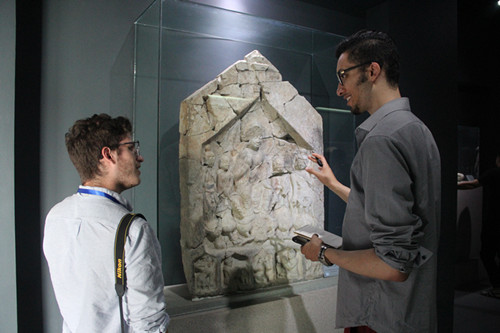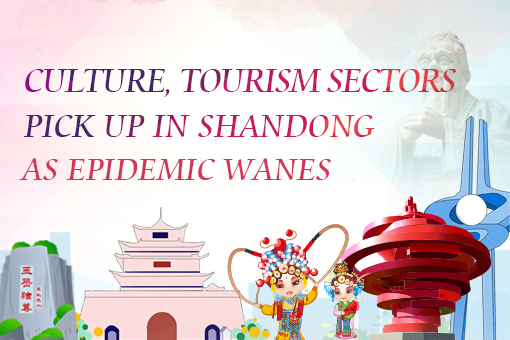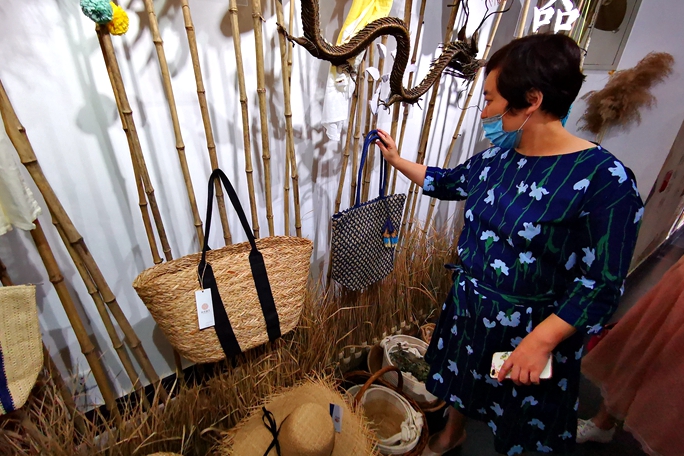Overseas media delegation takes a culture tour in Qingzhou
A delegation of journalists from South Korea and Japan paid a visit to a museum located in the county-level city of Qingzhou, affiliated to Shangdong province's Weifang city, according to chinadaily.com.cn on June 28.
The museum, thought to be one of the oldest museums in China, was set up in 1959 and rebuilt in 1984. It now covers an area of 26,666 square meters, and features rustic architecture with ethnic characteristics.
The museum consists of 10 exhibition areas, displaying more than 20,000 cultural relics ranging from pottery and jade sculpture to bronze ware and stone inscriptions, some of which date back as far as China's ancient Shang (1600 BC–1046 BC) and Zhou Dynasties (1046–256 BC), and even further.
 |
|
Journalists admire the ancient relics in the museum of Qingzhou on June 28 [Photo by Wang Qian/chinadaily.com.cn] |
The ancient city of Qingzhou is home to hundreds of well-preserved streets which date back to the Ming (AD 1368–1644) and Qing Dynasties (1644–1912).
The overseas journalists admired the local cultural heritage and took in several performances as well as sampling traditional snacks.
Zhao Xingtang, one of the performers who played a kind of traditional zither-like instrument called a cuoqing, said he had performed in the ancient city for three years and rewarded to the tune of 50 yuan ($7.5) a day by the government.
 |
|
Zhao Xingtang (L), plays the cuoqing, a kind of traditional zither-like instrument, in the ancient Qingzhou city. [Photo by Wang Qian/chinadaily.com.cn] |
"The municipal government will organize inheritors to perform in the ancient city and give them a certain amount of subsidies," said Li Chuanjiang, the director from the foreign publicity department of Weifang. He added that the city will encourage more people to get involved in the preserving local cultural heritage.
 |
|
Two folk artists perform Pu Hudie, a dance of cultural importance, in the ancient Qingzhou city. [Photo by Wang Qian/chinadaily.com.cn]. |

 Shandong Culture and Tourism Consumption Season
Shandong Culture and Tourism Consumption Season Culture, tourism sectors pick up in Shandong as epidemic wanes
Culture, tourism sectors pick up in Shandong as epidemic wanes

